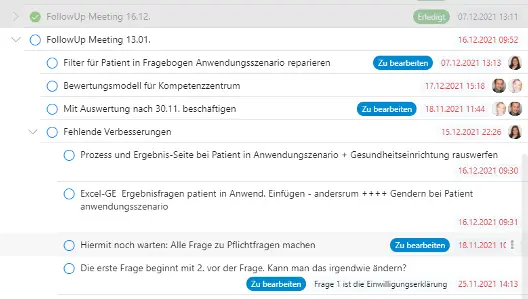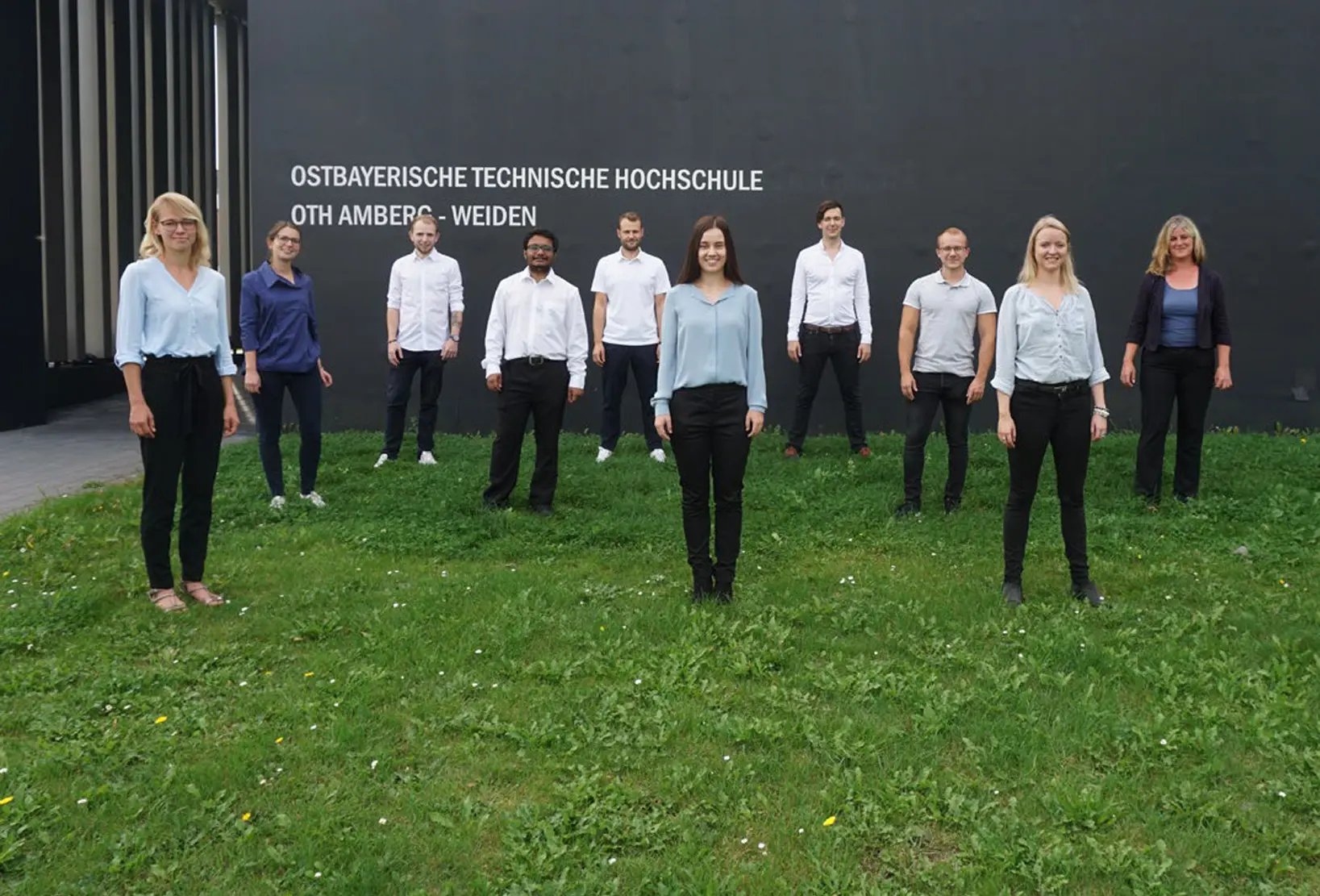Success Story: Technical University of Applied Sciences Amberg-Weiden
Zenkit Base and Zenchat allows the university to carry out their complicated research project remotely and successfully.
Technical University of Applied Sciences (Ostbayerische Technische Hochschule – OTH) Amberg-Weiden is a university based in Bavaria, Germany, which was established back in May 1994. Zenkit was introduced to the university in 2020 to support an important state funded research Project 5G4Healthcare. Juliana Hartig, the research associate of the Faculty of Industrial Engineering and Health, told us that with the support of Zenkit Base and Zenchat, their research team works more effectively despite having a completely remote team! We’re happy to hear that she has a very positive story to share today. In just a few minutes, you’ll learn how the researchers are able to carry out their research successfully with the help of Zenkit.
Weiden in der Oberpfalz,
Germany
approx. 2500
employees
2 years using
Zenkit Base and Zenchat
Project Management, documentation
& team communication
“What is 5G4Healthcare?”
First comes first, you may be wondering what the project is about. 5G4Healthcare is a research project about the interoperability between healthcare in rural areas and 5G technology, which is the 5th generation standard global network to connect virtually everything together. 5G4Healthcare is one of the six research projects in the 5G Innovation Programme funded by the German Federal Ministry of Transport and Digital Infrastructure. The program aims to increase the efficiency of healthcare in rural areas with the implementation of 5G technology. To achieve this goal, the research team at the Technical University of Applied Science Amberg-Weiden has been studying and carrying out the project 5G4Healthcare, in which digital applications are evaluated.
In the 5GHealthcare project, a three-phase plan is devised, including modeling and designing of the entire workflow (phase 1), implementing 5G-settings (phase 2), and testing and evaluating living labs (real environments) and test beds (phase 3). Specifically, wit the two use cases “integrated care” and “homecare”, the research team has committed to explore how the 5G technology can increase the added value and bring about positive effects in healthcare.
Juliana and her research team work completely remotely, but they manage to focus on actual work without having to waste time on solving communication problems or ineffective documentation issues. Their secret is simple: around two years ago, they implemented two Zenkit products, Base and Zenchat.
The team uses Base to document the entire project in an interactive and smartly organized way, allowing every member in the team to grasp the overview of the project at a glance. Meanwhile, they use Zenchat to discuss not only the overall project, but also detailed items and subitems specifically in its own chat.
Working remotely has many potentials, but inevitably many obstacles that need to be overcome as well. With Zenkit, Juliana communicates effectively with her team and it strengthens the structure of the whole project despite not working physically next to each other.
“Zenkit Base and Zenchat support documentation and communication for the entire team to work 100% remotely.”

“Base is a space where all information and todo tasks throughout the entire project stages are stored.”
In the context of project management, you might have heard that a project contains many workstreams. If you are unfamiliar with the term workstreams, don’t worry! You could think of them as the crucial activities in a project that need to be completed by different groups of people. It’s a division of projects that could be tasks or even departments.
In order to have the best management of their research project, Juliana and her team built each of their workstreams its own Collection in Zenkit Base. In their Collections, one can find various items relevant to each workstream, including questions to the team lead, weekly meetings notes, information and to-do tasks for entire project stages (preparation, process and evaluation).
Base offers many different views, which allows every workstream lead to choose the best view for them, according to Juliana. She especially loves the “hierarchy view” in Base, which is one of the platform’s most popular view options (also available in Zenkit Projects). In the screenshot, you can see an example of their Collection created for the workstream “Reifegradmodell (Maturity model)”.
In this Collection, they created separate items for each meeting with their own subitems to document what was discussed in the meeting respectively. In the meeting on the 13th of January, they included topics such as fixing the filter of a questionnaire, missing improvements for the questionnaire, etc. As you can imagine, questionnaires are of importance for any research. A well-designed questionnaire helps to bring the most useful insights with regard to the research topic, resulting in more comprehensive analysis afterwards. In Base, they were able to note every detailed step that needs to be implemented for questionnai e optimization, including setting up each question to be a required answer field, adding a scale control to a specific question, fixing the numbering of the questions, etc.
As a result, this view allows them to see important events or information in the way they prefer during the entire research. For team members who would like to see details of each subitem, they can expand the main item by clicking on the arrow next to it. Or, for people who only want the main items without being overwhelmed by all available data, they can fold the items to get the best overview. This view is especially helpful for teams who collaborate, because it helps everyone to easily understand which information or to-do tasks belong to which main items.
“The hierarchy view lays out the main items and subitems of a workstream clearly for every team member.”

“The connection between Base and Zenchat.”
Last but not least, one of the benefits to implementing more apps from the Zenkit Suite is the integration among them. In their use case, Juliana and her team connect every Collection in Base to Zenchat. This way they have dedicated workstream chat rooms to communicate efficiently. For instance, whenever someone has a short note about the workstream, the research team would communicate directly in Zenchat. Of course, one still has the option to communicate in Base via the comment feature, but chatting via a communication app allows the conversation to be more natural and seamless.
Juliana emphasized that Base is a great project management tool, similar to Asana, but the extensions with Zenchat or other Zenkit Suite apps are really helpful! She considered that the Zenkit Suite allows you to add whatever fits and works to your business. At the end, Juliana summarized her experience collaborating with her team using Zenkit in one sentence for people who are considering implementing Zenkit to their own growing team as well – “Buy it, it works. It has no errors and the service is wonderful!”


